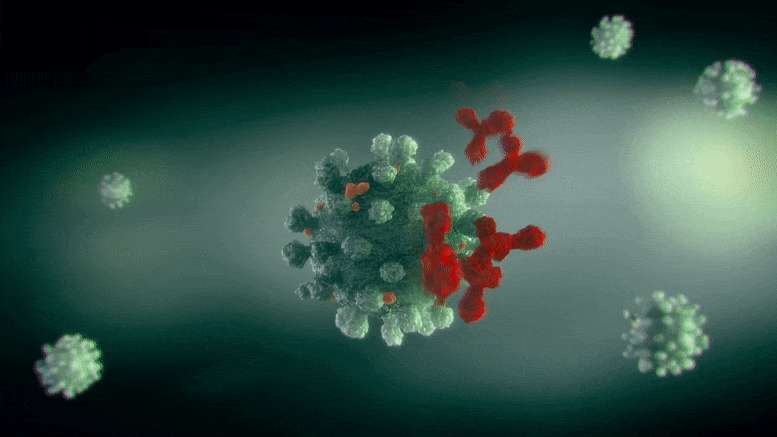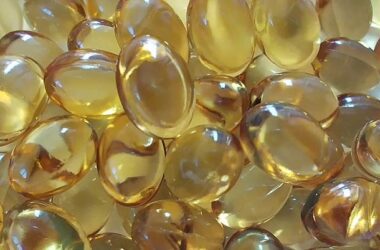
Le mécanisme biomoléculaire à l’origine de la molécule est la suppression d’une enzyme qui est surproduite dans diverses formes de cancer.
Les chercheurs ont identifié une molécule ayant une activité antiproliférative accrue dans les cellules cancéreuses.
La vitamine D3 accomplit des tâches biologiques essentielles telles que le maintien de la densité minérale osseuse, qui réduit le risque de fracture osseuse. Cependant, on pense que la vitamine D3 a un effet anticancéreux, car de faibles niveaux de vitamine D3 et la surproduction concomitante d’une enzyme appelée CYP24 ont été associés à un mauvais pronostic pour les patients atteints de cancer. Les molécules qui limitent ou inhibent l’activité de la CYP24, ainsi que les molécules qui imitent l’effet de la vitamine D3, sont actuellement étudiées en tant que médicaments antiprolifératifs possibles pour le traitement du cancer. Toutefois, bon nombre des inhibiteurs et des analogues de la D3 mis au point jusqu’à présent ont eu une réponse clinique insuffisante ainsi que des effets secondaires indésirables. Madhu Biyani, de l’université de Kanazawa, et ses collègues ont découvert un DNA-derived chemical that binds to and inhibits the action of CYP24 while also displaying promising antiproliferative activity. In addition, the research team provides extensive insights into the underlying molecular mechanisms at work.

An integrated approach of HS-AFM and molecular docking to reveal the binding mechanism of Apt-7 to CYP24 (A) The three-dimensional view of the top-ranking docked conformations of CYP24 and Apt-7. The predicted binding sites of Apt-7 are shown by an arrow. Aptamer binds to the substrate-binding site of CYP24 (binding site-1) and to the ADX binding site of CYP24 (binding site-2). (B) Comparison of the pseudo-HS-AFM graphics of CYP24-Apt-7 using molecular docking generated top-ranked pose of CYP24-Apt-7 complex to the real-time images captured by HS-AFM. Credit: Kanazawa University
The researchers tested a vast number of DNA aptamers, which are single-stranded DNA fragments with specialized three-dimensional structures that can bind to certain target molecules and have a functional effect when bound. They sought for DNA aptamers that bind to CYP24 but not to the similar enzyme CYP271B, which is responsible for vitamin D3 synthesis.
An initial longlist of 18 aptamer candidates was narrowed down to 11 candidates with specific molecular structures. The 11 representative aptamers were tested in vitro for their ability to inhibit CYP24. Four candidates that inhibited CYP24 but not CYP27B1 remained, one of which (Apt-7) were kept for further investigation

Internalization of aptamer into A549 cells is indispensable for CYP24 inhibition and enhancing 1, 25-D3 mediated cell-growth inhibition. (A) Internalization of Aptamer into A549 cells. A549 lung cancer cells were treated with 500 nM aptamer Apt-7 and had their membranes stained green (Wheat Germ Agglutinin (WGA) Conjugates). Confocal microscopy revealed the intracellular signal, derived from internalized aptamer (red fluorescence, Cy3). (B) Apt-7 inhibits the CYP24-mediated catabolism of 1,25-D3 in A549 cells. After 18 h of aptamer treatment, 1, 25-D3 metabolite conversion ratio and relative CYP24 activity were determined by HPLC. (C) Apt-7 enhances the anti-proliferative function of 1, 25-D3 in A549 cells. Credit: Kanazawa University
Biyani and colleagues performed simulations of Apt-7 binding to CYP24. A molecular docking scenario was obtained, which they checked experimentally by comparing the behavior of a mixture of vitamin D3 and CYP24 with and without Apt-7. The simulations and the experiments showed that Apt-7 results in the inhibition of CYP24 activity and that what happens is that the aptamer likely interferes with the enzyme’s active site. The researchers also performed high-speed atomic force microscopy on the binding of CYP24 and Apt-7 in real-time, confirming the molecular docking scenario obtained from simulations.
Finally, the research team studied the effect of Apt-7 at the cellular level by introducing the molecule to cancer cells. They observed significant CYP24 inhibition for a cancer cell line known to overexpress the CYP24 enzyme, thus showing antiproliferative activity. Quoting Biyani and colleagues, these findings “clearly characterized and proposed that a DNA aptamer-based molecule could be a promising lead candidate for anticancer therapy.
Reference: “Novel DNA Aptamer for CYP24A1 Inhibition with Enhanced Antiproliferative Activity in Cancer Cells” by Madhu Biyani, Kaori Yasuda, Yasuhiro Isogai, Yuki Okamoto, Wei Weilin, Noriyuki Kodera, Holger Flechsig, Toshiyuki Sakaki, Miki Nakajima and Manish Biyani, 18 April 2022, ACS Applied Materials & Interfaces.
DOI: 10.1021/acsami.1c22965


